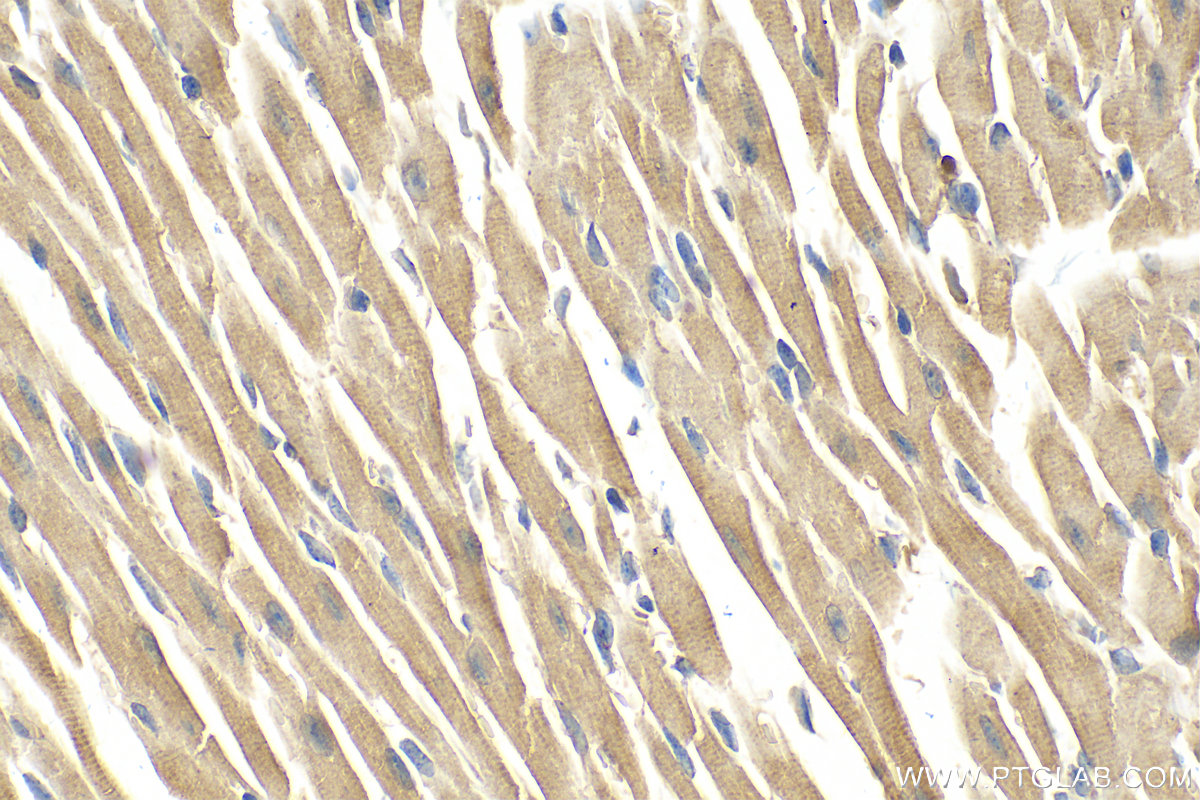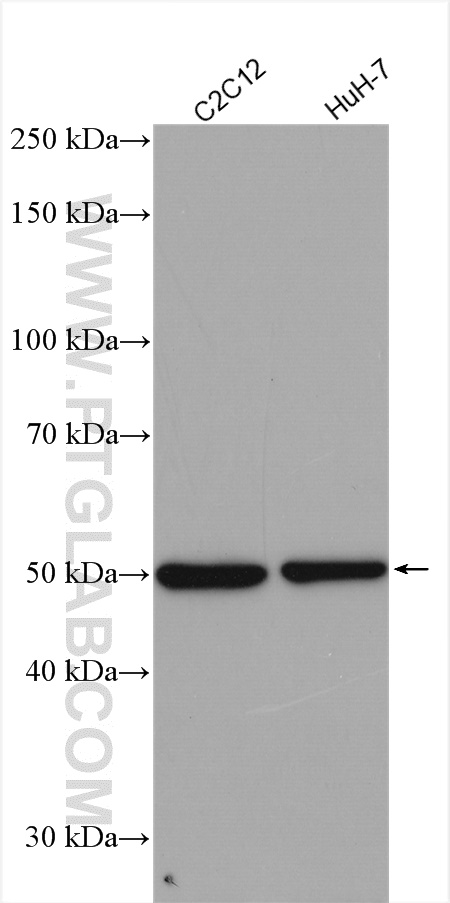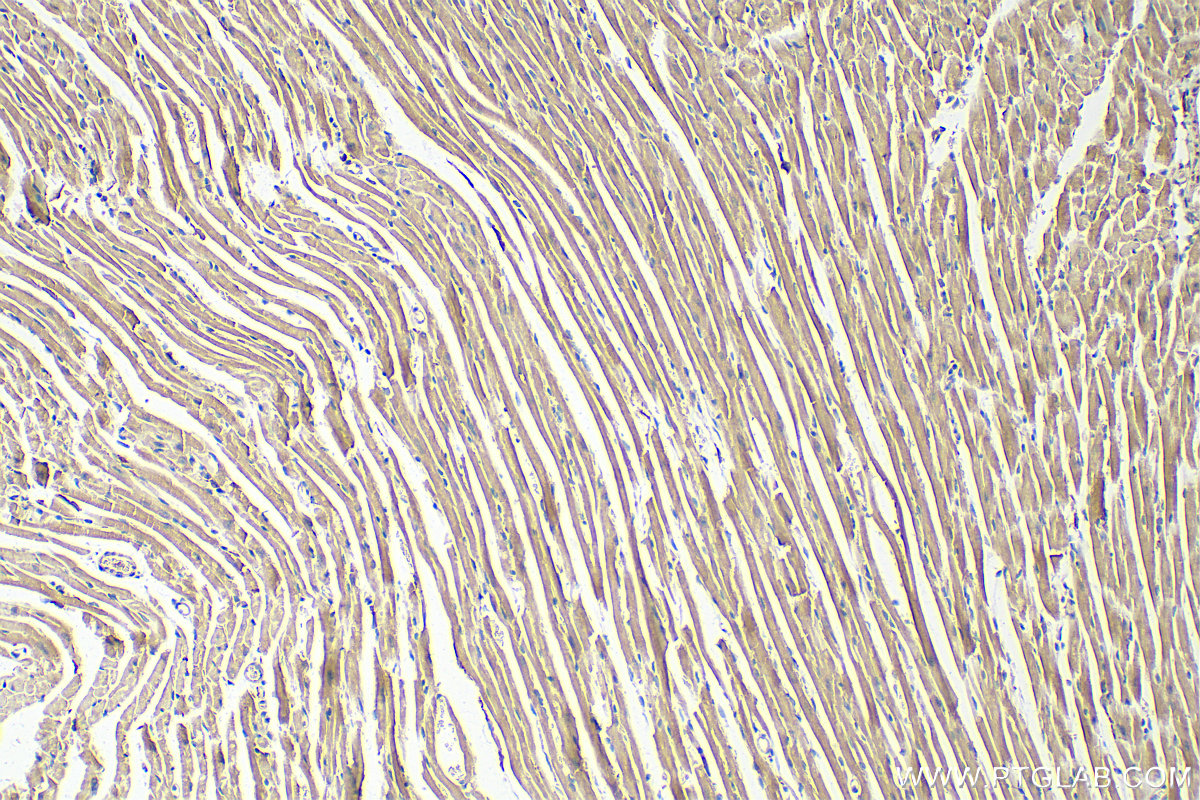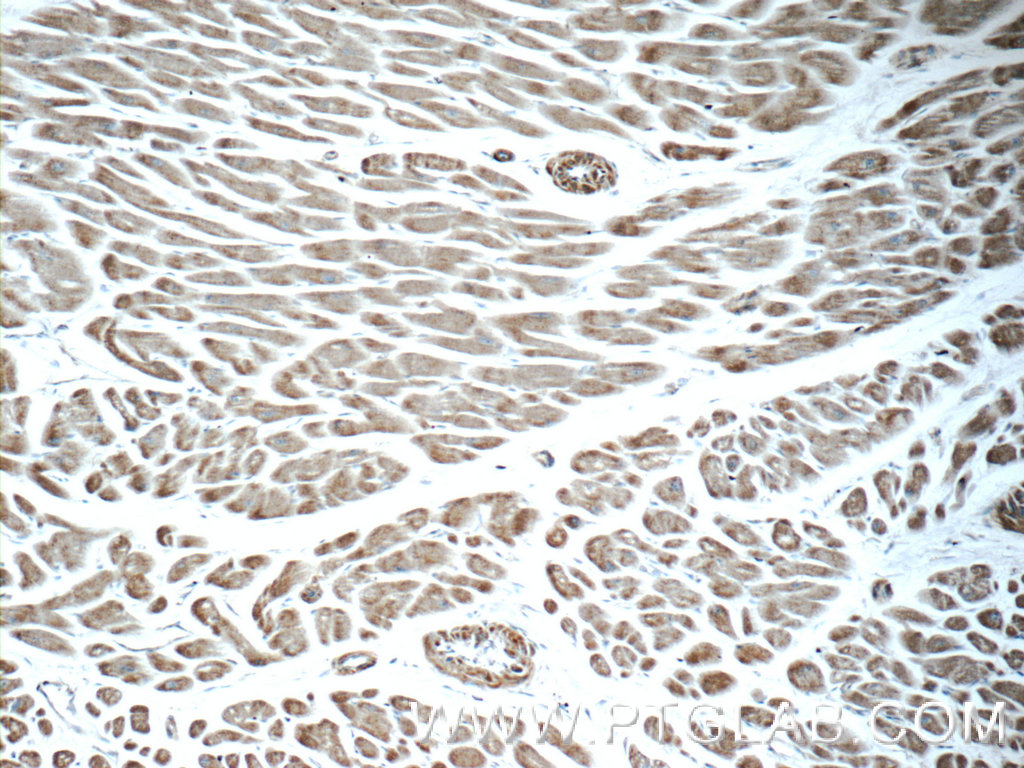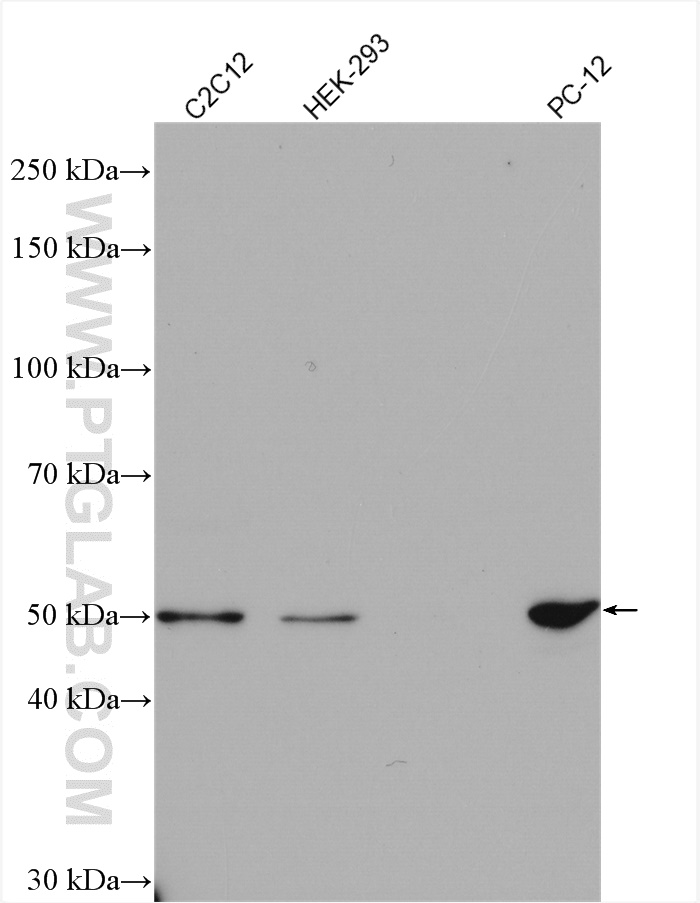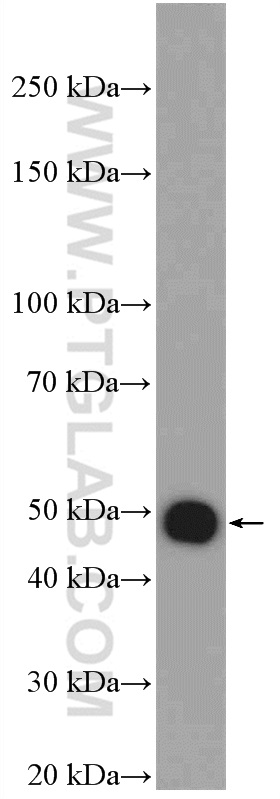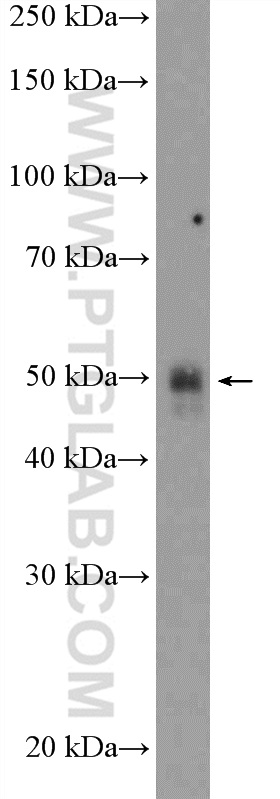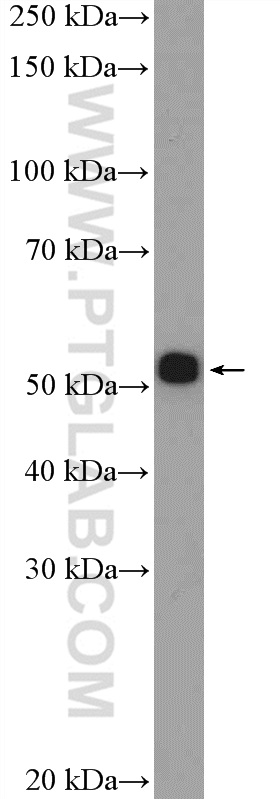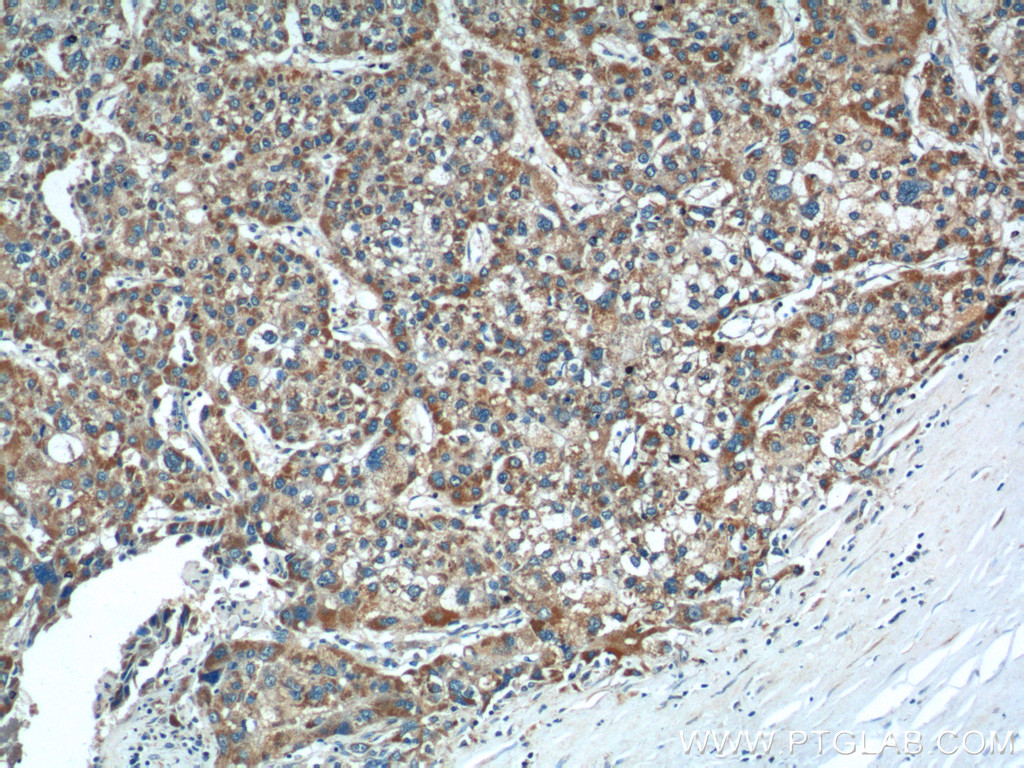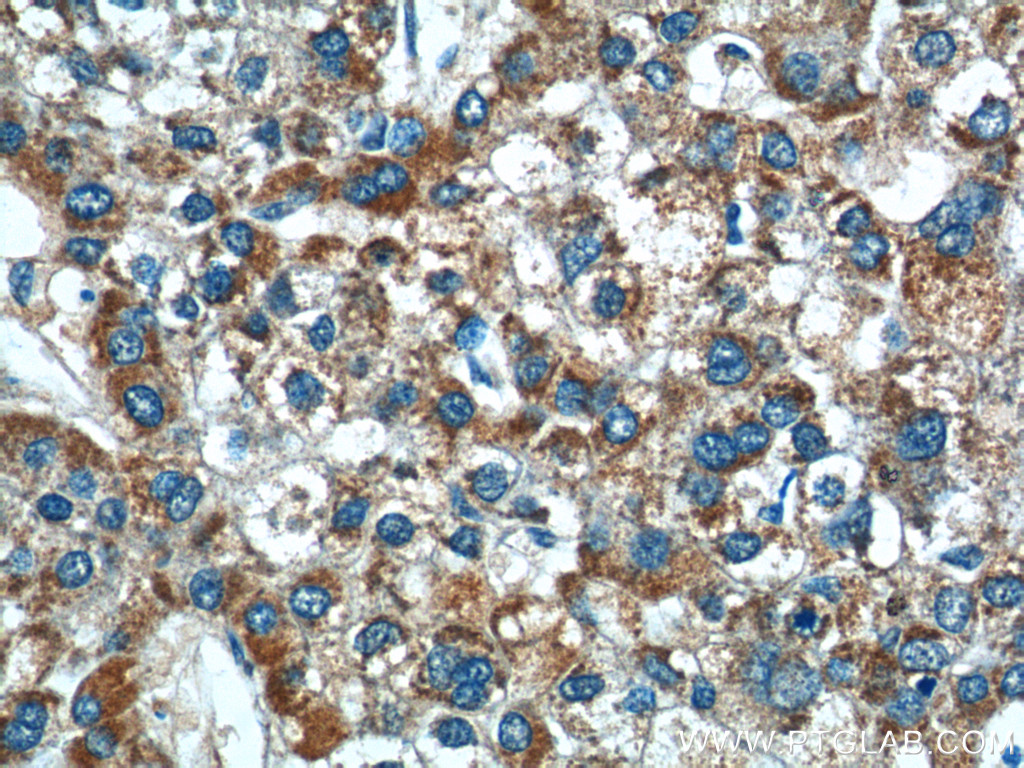验证数据展示
经过测试的应用
| Positive WB detected in | C2C12 cells, PC-12 cells, mouse kidney tissue, mouse heart tissue, HuH-7 cells, HEK-293 cells |
| Positive IHC detected in | mouse heart tissue, human liver cancer tissue, human heart tissue Note: suggested antigen retrieval with TE buffer pH 9.0; (*) Alternatively, antigen retrieval may be performed with citrate buffer pH 6.0 |
推荐稀释比
| Application | Dilution |
|---|---|
| Western Blot (WB) | WB : 1:500-1:1000 |
| Immunohistochemistry (IHC) | IHC : 1:50-1:500 |
| It is recommended that this reagent should be titrated in each testing system to obtain optimal results. | |
| Sample-dependent, Check data in validation data gallery. | |
产品信息
25343-1-AP targets AGTR1 in WB, IHC, IF, IP, CoIP, ELISA applications and shows reactivity with human, mouse, rat samples.
| Tested Applications | WB, IHC, ELISA Application Description |
| Cited Applications | WB, IHC, IF, IP, CoIP |
| Tested Reactivity | human, mouse, rat |
| Cited Reactivity | human, mouse, rat, zebrafish |
| Immunogen | AGTR1 fusion protein Ag14461 种属同源性预测 |
| Host / Isotype | Rabbit / IgG |
| Class | Polyclonal |
| Type | Antibody |
| Full Name | angiotensin II receptor, type 1 |
| Synonyms | AT1, Angiotensin II type-1 receptor, Angiotensin II type 1 receptor, AGTR1B, AGTR1A |
| Calculated Molecular Weight | 359 aa, 41 kDa |
| Observed Molecular Weight | 50 kDa |
| GenBank Accession Number | BC022447 |
| Gene Symbol | AGTR1 |
| Gene ID (NCBI) | 185 |
| RRID | AB_2880037 |
| Conjugate | Unconjugated |
| Form | Liquid |
| Purification Method | Antigen affinity purification |
| UNIPROT ID | P30556 |
| Storage Buffer | PBS with 0.02% sodium azide and 50% glycerol pH 7.3. |
| Storage Conditions | Store at -20°C. Stable for one year after shipment. Aliquoting is unnecessary for -20oC storage. |
背景介绍
Angiotensin II (Ang II), the main effector molecule of the renin-angiotensin system, exerts its actions mainly via interaction with type-1 angiotensin II receptor (AGTR1, also named AT1R), thereby contributing to blood pressure regulation. AGTR1 mediates its action by association with G proteins that activate a phosphatidylinositol-calcium second messenger system. By regulating vascular tone, cardiovascular function, and salt and water homeostasis, AGTR1 exerts an indispensable physiological role (PMID: 21600887). AGTR1 has been implicated in diverse aspects of human disease, from the regulation of blood pressure and cardiovascular homeostasis to cancer progression (PMID: 26975580).
实验方案
| Product Specific Protocols | |
|---|---|
| WB protocol for AGTR1 antibody 25343-1-AP | Download protocol |
| IHC protocol for AGTR1 antibody 25343-1-AP | Download protocol |
| Standard Protocols | |
|---|---|
| Click here to view our Standard Protocols |
发表文章
| Species | Application | Title |
|---|---|---|
Cell Res Cartilage oligomeric matrix protein is an endogenous β-arrestin-2-selective allosteric modulator of AT1 receptor counteracting vascular injury. | ||
Adv Sci (Weinh) Transcriptomics-Based Liquid Biopsy for Early Detection of Recurrence in Locally Advanced Gastric Cancer
| ||
Aging Cell Activation of angiotensin-converting enzyme 2/angiotensin (1-7)/mas receptor axis triggers autophagy and suppresses microglia proinflammatory polarization via forkhead box class O1 signaling | ||
Biomaterials Inhibition of tumor-promoting stroma to enforce subsequently targeting AT1R on tumor cells by pathological inspired micelles. | ||
Redox Biol Vitamin D receptor activation regulates microglia polarization and oxidative stress in spontaneously hypertensive rats and angiotensin II-exposed microglial cells: Role of renin-angiotensin system. | ||
Elife A zebrafish screen reveals Renin-angiotensin system inhibitors as neuroprotective via mitochondrial restoration in dopamine neurons.
|
